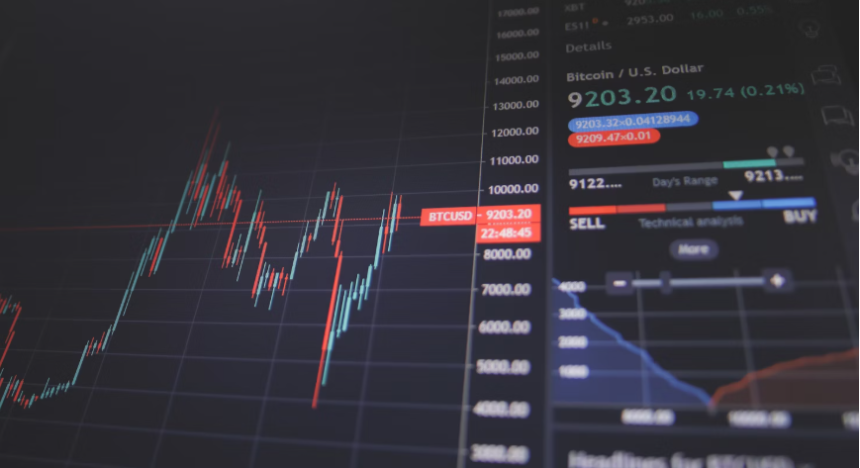It is a time of extreme tension in the Middle East. Military personnel have increased their activity particularly Israel, and diplomats are speaking constantly. Security has been significantly ramped up throughout the region. What’s more, the energy markets are very volatile, mirroring the uncertainty of the present. Much of this climate and the long list of outbreaks is, in one way or another, linked to a broader climate of heightened regional discomfort that is now affecting global markets and investment climates. Declines in the healthcare and technology sectors also contributed to the overall cautious sentiment.
Contrasting Movement in Market Indices
In the U.K., the FTSE 100 dipped 0.1%, closing. The largest losses were driven by healthcare and mining companies, including Compass Group plc, Fresnillo and GSK plc. Germany’s DAX index fell, losing 0.5%, with the dip led by industrial and chemicals giants, such as Rheinmetall AG, Bayer and BASF. France’s CAC 40 index broke the trend, though, rising 0.6%. The broader STOXX 600 also edged higher, by 0.1%.
Russian Oil Embargo Raises Geopolitical Awareness Among Investors
Rising tensions in the Middle East have given the markets a tantalizing air of uncertainty. Markets have taken this more cautious approach in the wake of reports of increased military activity in the region. Additionally, words on potential ceasefires and continued trickle down in the energy sector for Eastern Europe also had market fluctuation. Expectations for potential changes in trade policy, particularly tariffs, also dragged on market sentiment.
Geared Towards Central Bank Decisions
Investors were centered on an interest rate decision from the US Federal Reserve later in the day. The market had widely anticipated that the central bank would hold interest rates steady. But all eyes were on the economic projections that were widely seen as giving insight into the future of policy. A key factor was the potential impact of ongoing geopolitical strains and trade policy developments on inflation and the economy’s growth.
Overnight, Asian markets were mixed. The Nikkei 225 index in Japan finished down 0.3% as rates there also remained on hold at the Bank of Japan. Investors heard similar fears of a potential redoing of trade policy toward the United States. In China, the Shanghai Composite Index fell 0.1 percent, after recent advances driven by technology and stimulus measures hit a downdraft. Increasing chatter of possible curbs on access to US chips weighed on market sentiment, too. The Hang Seng in Hong Kong added 0.1%. The S&P/ASX 200 index finished 0.4% lower in Australia and South Korea’s Kospi index rose 0.6%.
In the commodities market distillate prices are slightly down while Brent crude oil inched up and US crude oil prices fell. Safe-haven gold prices continued to hold near record levels as investors sought refuge amid geopolitical challenges. On the currency side, Euro/Dollar was down, while Euro/Pound was up. These rises and falls reflected the market response to interweaving economic and geopolitical forces.
At present Investor Behaviour Is Largely Influenced by Economic Data and Policy Announcements
Historically out of steam shoppers were everywhere; and investors were watching release of economic data and policy statements from various quarters. These releases provided a glimpse into economic growth, inflation and jobs, and influenced investor outlook on coming market headwinds. The digesting of these data points and reading of central bank dialogue all filtered into the prevailing mood in markets. Investors were particularly attentive to how these will likely impact profits and investment returns. These market dynamics were consistent with ongoing assessment of the backdrop for the economy, and expectations for policy adjustments to come.
Glossy European markets on Wednesday mirrored the complicated choreography of global economic signals and geopolitical fears. Investors were navigating a patchwork of central bank news and the ongoing risk of international tensions. Amid this climate, the direction of the thrust of major indices underscored the fine line between optimism and caution, a duality of sorts, that highlighted the specificity of the market to both short- and long-term outlooks.
The market now turned to what might be the most consequential central bank decision in decades — namely, what the US Fed may do — exposing monetary policy’s role in shaping investor expectations. With economic outlooks dawning, analysts say watch for hints of potential future reality, including information that could affect decisions across a range of asset classes. Asian markets were mixed amid a global impact as regions grappled with varying combinations of economic and political news.
The price action in commodity and currency markets, meanwhile, reflected a measure of investor sentiment, as gyrating crude and gold rates recalibrated to the influence of shifting risk appetites. The intense examination of economic data and policy pronouncements illustrated how reliant the markets are on information as a guidepost to what lies ahead. Such dynamics brought together a number of other forces that made for a thoughtful, if complex, investment backdrop.






